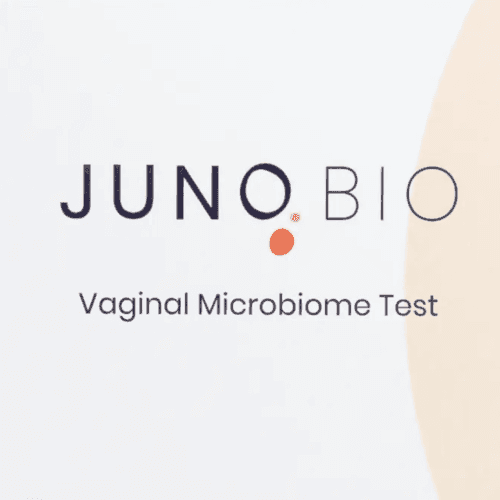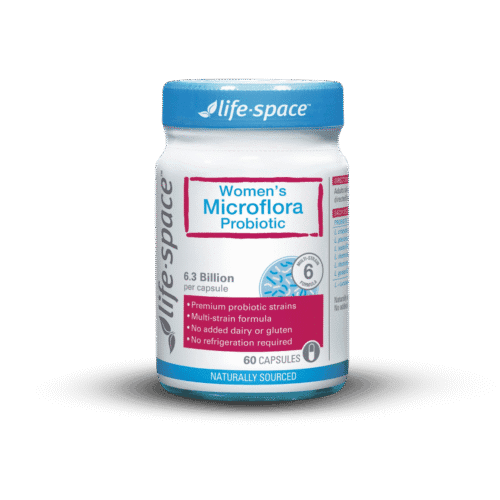We use lactulose vaginally for various forms of vaginal dysbiosis, including bacterial vaginosis (BV), to selectively promote the growth of protective lactobacillus species.
We use vaginal lactulose to boost a protective lactobacilli species, which are strong fermenters of lactulose. Lactobacilli ferment lactulose and turn it into lactic acid. But they are not the only ones.
Thus, with certain bacterial profiles, we tend to avoid lactulose, as it can exacerbate infections by feeding specific pathogens or disruptive bacteria.
Using lactulose to boost lactobacilli species is a good strategy in bacterial vaginosis, but not aerobic vaginitis (AV), or if you are prone to urinary tract infections (UTIs) or if your microbiome report contains large amounts of any of the bacteria listed below.
How much is ‘too much’ lactulose-loving bacteria in the vagina?
When collectively, any of the bacteria listed below make up more than 10-20% of the total vaginal microbiome (except lactobacilli, which we want to maintain), it is recommended to avoid lactulose vaginally. If any of these microbes are present in any number, consider your use of lactulose carefully.
If you have a history of urinary tract infections, it may also be best to avoid vaginal lactulose in case you inadvertently feed your UTI-causing pathogens in the nearby urethra. This doesn’t always happen, but vaginal lactulose can trigger a UTI if the conditions are favourable.
Lactulose is galactose and fructose!
Lactulose is made up of two bound sugars: galactose and fructose. Not all microbes can utilise these sugars, as they can’t break the bonds that join the sugars together to release them. Or, they may not be able to utilise galactose or fructose.
#notallaerobes
As you can see, many of the listed bacteria below are not strictly aerobic – in fact, most of them use a combination of aerobic and anaerobic respiration.
Whether they can utilise lactulose (galactose or fructose) or not has no real bearing on a bacterium’s respiration style – not all aerobes are galactose or fructose lovers, so stick to the list when making your choices.
Please note that this list is not exhaustive. We have information available from research specifically on lactulose, but more exists separately for galactose and fructose. If lactulose worsens your symptoms, stop using it and try something else.
Group B Streptococcus is not on this list!
Streptococcus agalactiae, also known as Group B Strep or GBS, does not utilise lactulose as an energy source, and therefore lactulose can be used in GBS vaginal infections safely.
Getting a vaginal microbiome test
Don’t know what bugs you have? Get a comprehensive vaginal microbiome test, and if you’re unsure how to interpret the results, book an appointment at the My Vagina clinic for analysis.
Please note that the study used as a reference employs bacteria in the digestive tract, thereby excluding many vaginal lactobacilli.
Key:
- Obligate anaerobe – can only survive in an oxygen-free environment
- Facilitative anaerobe – can survive in oxygen-free and oxygenated environments
- Obligate aerobe – can only survive in oxygenated environments
Lactulose-fermenting bacteria1
- Bifidobacterium adolescentis (obligate anaerobe) (strong fermenting abilities2)
- Bifidobacterium dentium (anaerobe) (strong fermenting abilities2)
- Bifidobacterium pseudocatenulatum (obligate anaerobe) (strong fermenting abilities2)
- Bifidobacterium sp. (anaerobe) (strong fermenting abilities2)
- Clostridium leptum (obligate anaerobe)
- Clostridium nexile (obligate anaerobe)
- Clostridium perfringens (obligate anaerobe)
- Clostridium scindens (obligate anaerobe)
- Enterobacteriaceae bacterium (facultative anaerobe)
- Enterococcus casseliflavus (facultative anaerobe)
- Enterococcus faecalis (facultative anaerobe)
- Enterococcus faecium (facultative anaerobe)
- Enterococcus gallinarum (facultative anaerobe)
- Enterococcus saccharolyticus (facultative anaerobe)
- Escherichia coli (facultative anaerobe) (weak fermenting abilities2)
- Escherichia fergusonii (facultative anaerobe)
- Eubacterium rectale (obligate anaerobe)
- Klebsiella aerogenes (formerly Enterobacter aerogenes (facultative anaerobe)
- Klebsiella pneumoniae (facultative anaerobe)
- Klebsiella sp. (facultative anaerobe)
- Klebsiella variicola (facultative anaerobe)
- Lactobacillus acidophilus (facultative anaerobe) (strong fermenting abilities2)
- Lactobacillus delbrueckii subsp. bulgaricus (facultative anaerobe) (strong fermenting abilities2)
- Lactobacillus fermentum (facultative anaerobe) (strong fermenting abilities2)
- Lactobacillus plantarum (facultative anaerobe) (strong fermenting abilities2)
- Lactobacillus reuteri (facultative anaerobe) (strong fermenting abilities2)
- Lactobacillus spp. (facultative anaerobe) (strong fermenting abilities2)
- Leuconostoc mesenteroides (facultative anaerobe)
- Marvinbryantia formatexigens
- Megamonas funiformis (anaerobe)
- Mitsuokella multacida (obligate anaerobe)
- Pediococcus acidilactici (facultative anaerobe)
- Pseudomonas putida (obligate aerobe)
- Ruminococcus gnavus (obligate anaerobe)
- Ruminococcus obeum (obligate anaerobe)
- Staphylococcus aureus (facultative anaerobe) (weak fermenting abilities2)
- Streptococcus anginosus (facultative anaerobe) (strong fermenting abilities2)
- Streptococcus equinus (facultative anaerobe) (strong fermenting abilities)
- Streptococcus sanguinis (facultative anaerobe) (strong fermenting abilities2)
- Weissella paramesenteroides (facultative anaerobe)
Bacteria that cannot ferment lactulose
- Streptococcus agalactiae (group B Strep)
- Staphylococcus epidermis
- Ristella2
- Proteus2
- Salmonella2
- Shigella2
References3
- 1.Mao B, Li D, Zhao J, et al. In Vitro Fermentation of Lactulose by Human Gut Bacteria. J Agric Food Chem. Published online November 3, 2014:10970-10977. doi:10.1021/jf503484d
- 2.Hoffmann K, Mossel DAA, Korus W, Kamer JH. Untersuchungen �ber die Wirkungsweise der Lactulose (?-Galactosido-Fructose) im Darm. Klin Wochenschr. Published online February 1964:126-130. doi:10.1007/bf01479054
- 3.Vičič V, Pandel Mikuš R, Ferjančič B. Review of history and mechanisms of action of lactulose (4-O-β-D-Galactopyranosyl-β-D-fructofuranose): present and future applications in food. J Food Sci Technol. Published online May 8, 2024:2036-2045. doi:10.1007/s13197-024-05997-z

Get a fresh perspective with a qualified, experienced vulvovaginal specialist naturopath.
This product has multiple variants. The options may be chosen on the product page
The most comprehensive vaginal microbiome test you can take at home, brought to you by world-leading vaginal microbiome scientists at Juno Bio.

Promote and support a protective vaginal microbiome with tailored probiotic species.






